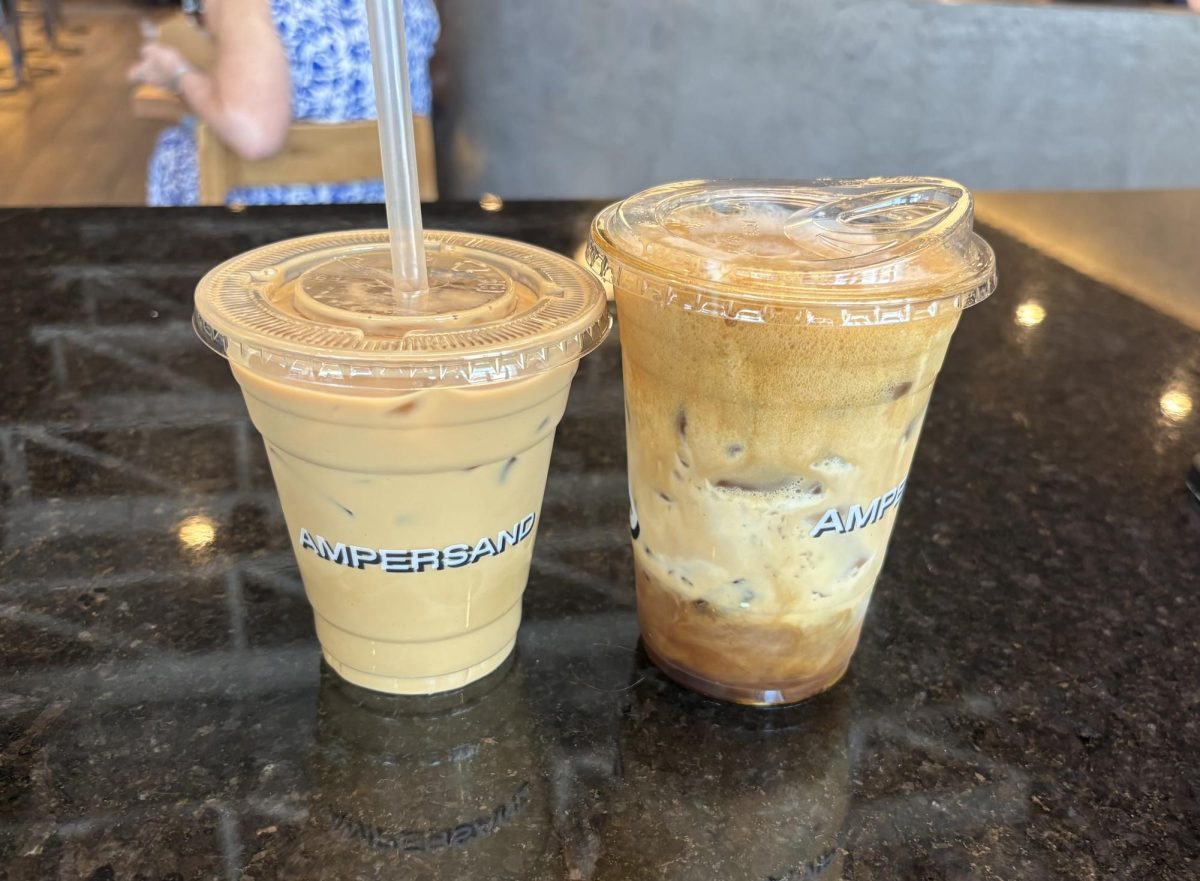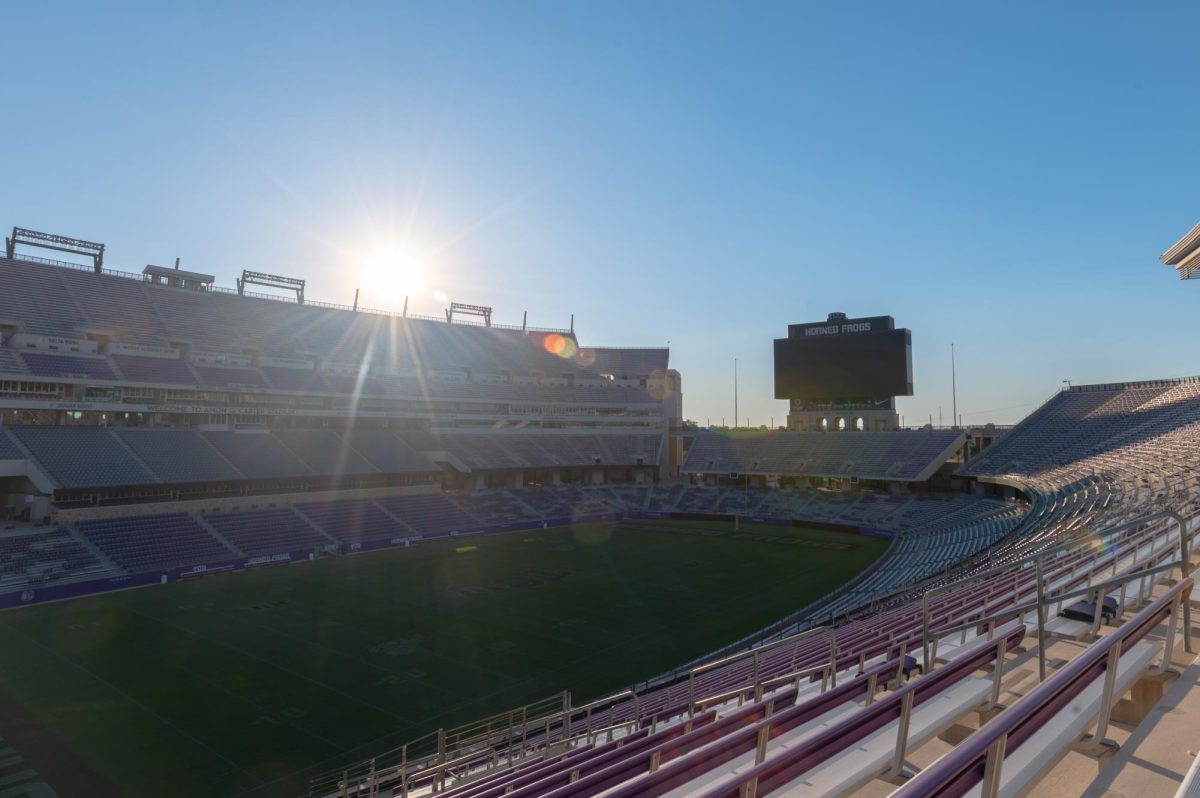In 1993, the Tarrant County Jail designated one floor to be occupied by Crips and Blood gang members. Months before, that would have been the cause for bloodletting. But this time, the rival gangs got along. Both sides honored the truce, which carried over into the streets and neighborhoods of Fort Worth. The gang peace had started months before when former leader of Fort Worth’s west side Crips, Abdul Chappell, was sitting in his Tarrant County jail cell. The story of a 4-year-old girl’s murder had spread among the incarcerated gang members. Her killer attended an event with the intent of shooting a rival gang member and accidentally shot the girl. Chappell knew her. She was the daughter of one of his friends, who was not involved in gang activity. She was the same age as his daughter. “It was a tragic thing,” said Chappell. “I would forever have to look at him, and he see my daughter and his daughter wasn’t there because of [gang culture] I was apart of.” Her death caused Chappell to say enough is enough in 1993. Chappell spoke with other incarcerated Crips, the leader of the Bloods at the time and Blood members about a truce between the groups. The truce meant “there was peace in the streets,” Chappell said. Peace was a major change in Fort Worth. From the 1980s to the early 2000s, gang violence was so common Fort Worth was nicknamed “Murder Worth.” Police officer Steve Groppi has worked with the gang unit since 1992 — when gang shootings happened every night, he said. The gang activity was so high the TV show “COPS” came to Fort Worth, said Jacinto Ramos Jr., who works as a juvenile probation officer, an adjunct professor in the criminal justice department at TCU and president of the Fort Worth ISD school board. “When [“COPS”] came here in the 1980s and 1990s, it was because they had a much higher probability of catching some action on their cameras,” he said. “They knew that there was so much gang involvement, so much problems that were going on.” The gang violence was a staple in Chappell’s life. He was shot six times and spent 21 years behind bars. At 14 years old Chappell stole his mother’s car and drove to California in an attempt to join N.W.A member Eazy-E’s record label, Ruthless Records. He didn’t meet Eazy-E or join the label, but he stayed in California with his aunt for a while, where he was introduced to the Crips. He felt a brotherhood, a bond with elders. “I didn’t see the gangbanging, the violent part,” he said. He may not have seen the violent part of the Crips in California, but it was not long until that violence followed him home to Fort Worth. Every weekend there was a ritual, which started at what was then called the Aragon Ballroom. Chappell said the gang members would meet at the ballroom, where a shoot-out would usually ensue. It was in one of these incidents Chappell was shot the second time. Fights between the different gangs in Fort Worth were commonplace. “At one point in time I think the west side was into it with everybody, in every side of town,” Chappell said. Chappell listed names of individuals who died and said, “I could just go on and on and on how it just went back and forth.” About 25 years ago, 201 individuals were murdered in gang-related instances, including 55 young people in one year, said retired police officer Luther Perry. This is a stark contrast to the 56 total murders reported in 2015 to the Fort Worth Police Department, according to the Texas Department of Public Safety. Groppi said the gang violence reduction is a national trend as street gangs have evolved to resemble organized crime group. However, Fort Worth leads the way in reducing gang activity, and has been a model on how to reduce crime and gang violence for other cities, Perry said. The most active street gangs in Fort Worth are the Crips, Sureños, Bloods and Latin Kings, according to TDPS. Currently, there are 75 documented and confirmed active gangs with 2,711 active members in Fort Worth, said Jesus Alaniz Fort Worth Police Department sergeant and Gang Enforcement Team Two supervisor. According to TDPS, the total number of gang members in Texas exceeds 100,000 making the Fort Worth gang membership population 2.7 percent of the total Texas gang membership population. Fort Worth’s gang membership population is also small when compared to Fort Worth’s population, Alaniz said. In 2015, Fort Worth’s population was 833,319, which meant gang members were 0.3 percent of Fort Worth’s population. People need to “shatter that mental model” that gangs are running rampant in Fort Worth, Ramos said. “It’s not that they’re necessarily hiding, they’re just almost non-existent,” he said. “In 1998, at Tarrant County Juvenile [Detention Center] every other young person was going to be gang-involved or gang-associated.” Now, Ramos said it might be a week or two before a gang-involved or gang-associated young person is there. Compared to gang shootings every night in 1992, now a gang shooting occurs only a couple times a month, Groppi said. Groppi said the reduction of gang violence in Fort Worth could be contributed to multiple factors and programs in Fort Worth. “Fort Worth is unique in how we’ve been able to come together to work with our problematic population,” Ramos said. One of the factors was the 1993 truce led by Chappell. Groppi said the truce resulted in an immediate reduction in gang violence. Chappell said the truce caused a shift in gang activity, which can be seen today. Most people who were gang members in their 20s or 30s are now a part of two-parent households. They attend PTA meetings, like Chucky Ivarra, an original member of the 5th Street Gang, whose two brothers were killed by gang violence, Ramos said. Ivarra talks to Ramos’ class at TCU each semester. When Ramos asks Ivarra what his children’s life will be, Ivarra cries and says his children will go to TCU. Those involved in gang violence began to cause less violence and the next generation followed suit. “The examples changed,” Chappell said. The truce has been credited with reducing gang activity by 48 percent since 1993, Chappell said. UMOJA In 1994, Perry was tired of the violence. He was tired of watching gang members dump bodies of deceased rival gang members from caskets at funerals. He said enough and founded UMOJA. “We pulled together some 25 African-American men. We had no direction. We had no idea what we were going to do, but we just said that we have to start to take ownership of what’s happening in our community,” he said. Currently, UMOJA, which means unity in Swahili, is composed of 20 African-American men who work to positively impact and influence Fort Worth youth. UMOJA is in several elementary, middle and high schools in east, west and southeast Fort Worth. Every year UMOJA holds an annual conference, which typically every high school in Fort Worth sends 20 to 25 students to, Perry said. The program is now serving the second generation of youth in Fort Worth, Perry said. Parents who went through the program are sending their children through the program, Perry said. “Not because they are at risk or in trouble, but because they want them to be associated with men who are bound and determined.” Perry said, “We are probably one of the, if not the, premier group that has been instrumental in aiding the police department in its efforts to reduce gang violence and set kids on path of success.” Comin’ Up The City of Fort Worth, the police department and the Boys & Girls Clubs of Greater Fort Worth formed the Comin’ Up Gang Intervention Program in 1994, said Sherry Hudson, site coordinator for the Boys & Girls Clubs of Greater Fort Worth. The mission is “to reduce the level of gang violence in Fort Worth,” Hudson said. Comin’ Up has six sites throughout Fort Worth that work with kids between the ages of 13 and 24 years old. “We have lots of community partners, we’re not successful just by ourselves of course,” Hudson said. “We work with a bunch of different agencies in the community. We have a strong relationship with the Fort Worth Police Department gang unit. We try to make it as collaborative an effort as possible.” Now, Ivarra prints t-shirts and is an entrepreneur, Ramos said. “That’s what we did at Comin’ Up. If they weren’t going to go to college we gave them a skill set,” Ramos said. Comin’ Up program coordinator Brian Hall said Comin’ Up has heavily contributed to watering down the gang culture. “Comin’ Up has definitely done their part,” he said. “We do our best to be proactive and try to keep things to a minimal.” Police The Fort Worth Police Department has a specific gang unit that numbers roughly 35 officers who deal directly with gang activity, Alaniz said. “A lot of [the gang violence and subsequent decrease] its due to the manpower and the dedication of resources that our department puts forward in addressing [gang activity].” The unit is comprised of enforcement teams who take direct action against gang crimes and members, an investigative unit, where detectives follow up on gang specific crimes and an intelligence team who finds and disseminates information between the unit and department, Alaniz said. Outcome Although the numbers are smaller, gangs still exist in Fort Worth. “[Gang activity has] been much worse in the past. I think we’re ahead of the game compared to other cities and other parts of the country,” he said. Perry said Fort Worth has had a 50 to 51 percent crime reduction in relation to gangs. Fort Worth has a good handle on gang activity, Alaniz said. “I think we’re on the up and up whenever it comes to addressing gang crime,” Alaniz said. Hall said Comin’ Up has their “finger on the pulse” of gang activity and that the pulse is very light right now. Chappell was released from prison most recently in 2014. He said gangs are still in Fort Worth, but they are less violent and on the second or third generation. “The lifestyle has changed,” Chappell said. “Most of every enemy that I had back then are some of my closest friends now. We contributed to a lot of the destruction. We feel obligated to try to create something of change. It’s obligatory, not an option.”



